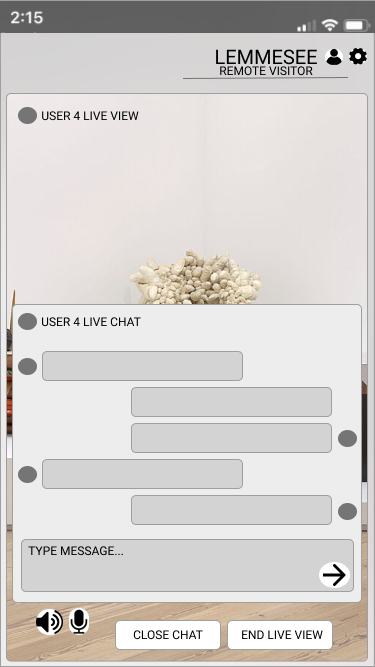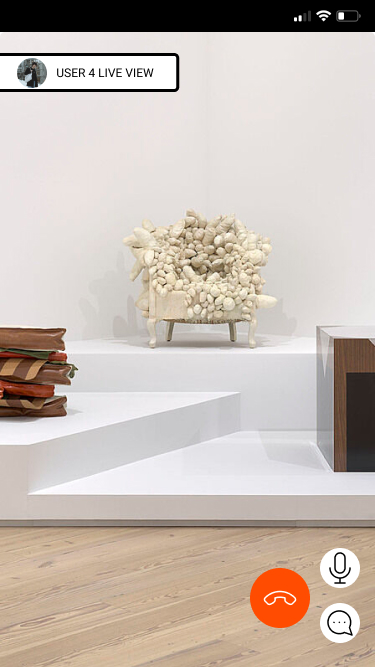How does it work?
Lemmesee uses the back camera on a user's personal device to facilitate a video call between remote and in-person visitors. The use of the back camera, rather than the front camera, reinforces that the conversation will be centered around the artworks of interest.
However, no camera needs to be used at all. Lemmesee creates a more accessible option for those who are visually impaired by allowing museum spaces to be explored, described, and discussed in real time without having to rely on visuals.
Accessibility
While many museum websites provide descriptions of works on display, these are typically formulaic and unemotional. While these types of descriptions can be helpful for a visually impaired person to understand what they are looking at, they do not allow that person to understand how the works are perceived on first or lasting glances, or describe how the painting fits into the museum environment or the collection that surrounds it.
Lemmesee provides the opportunity for individuals to experience museums and the works inside them more intimately and individually through the eyes of a fellow visitor, not necessarily a museum professional.
Making requests
Users who visit the museum in person are able to request a call from a remote visitor that is currently exploring the same space online in order to discuss what they see with someone taking an interest in the same content.
Remote users who are unable to access the physical space but wish to engage more actively can request a video call with a museum visitor, which gives them the chance to discuss differing experiences of the same content.






















